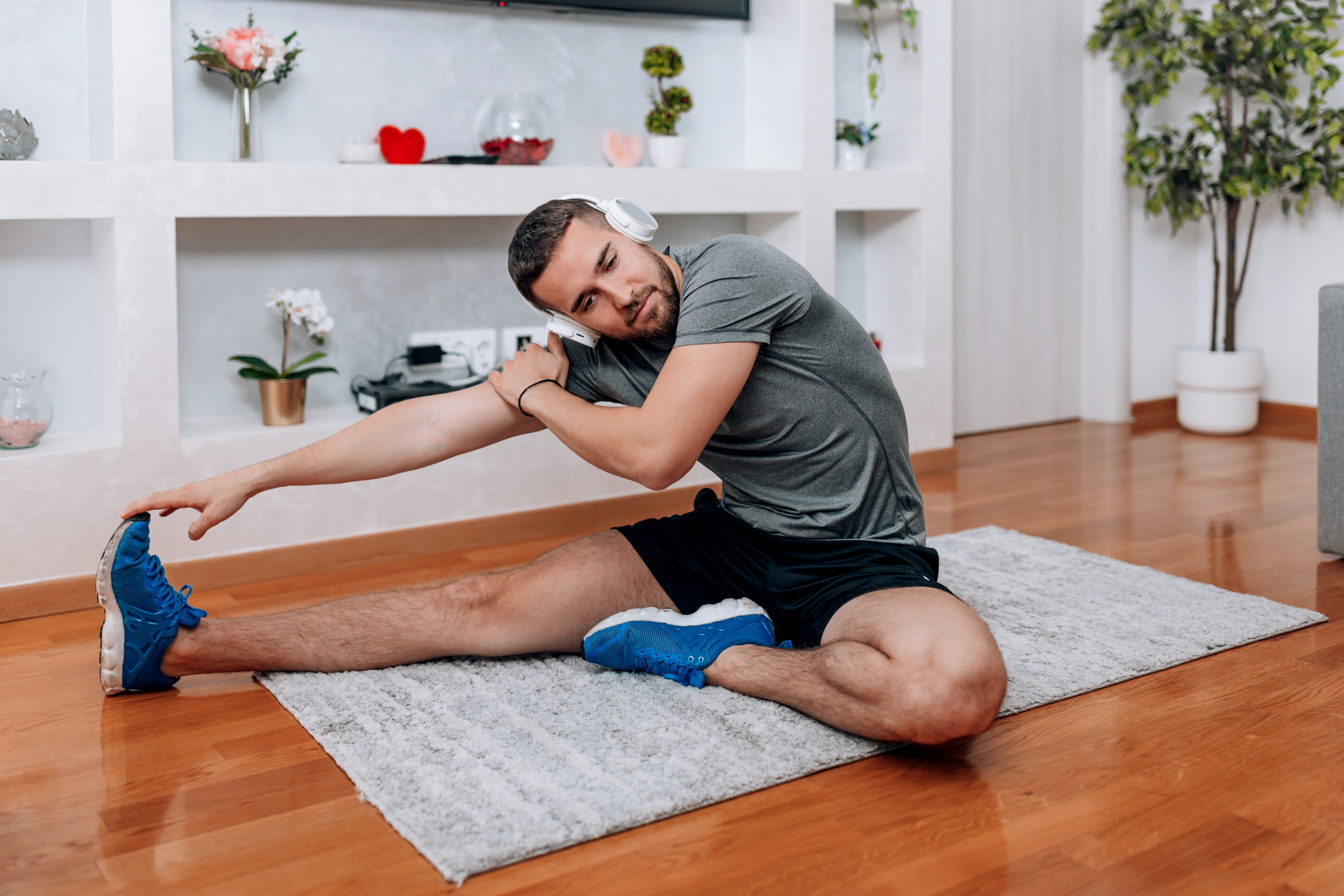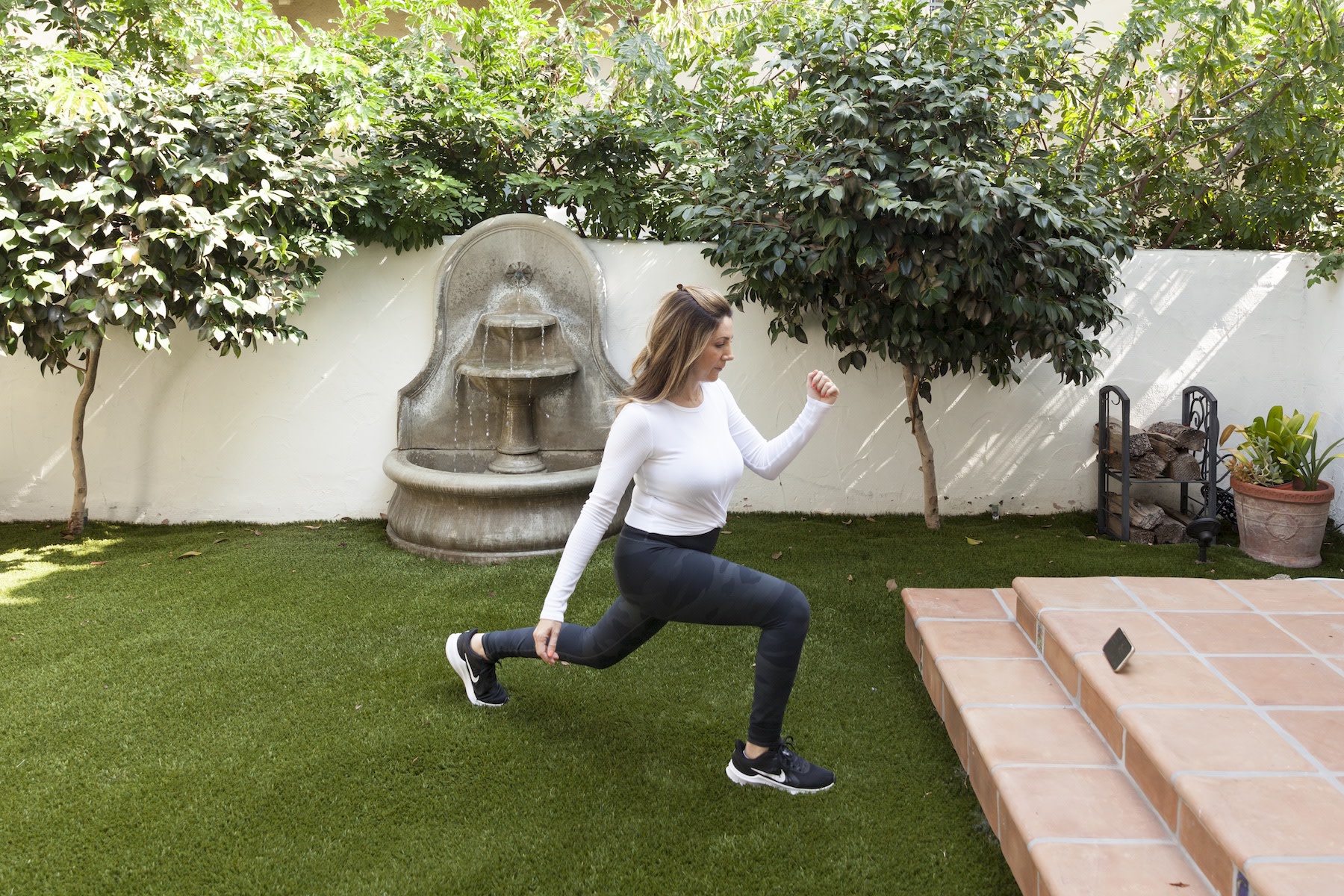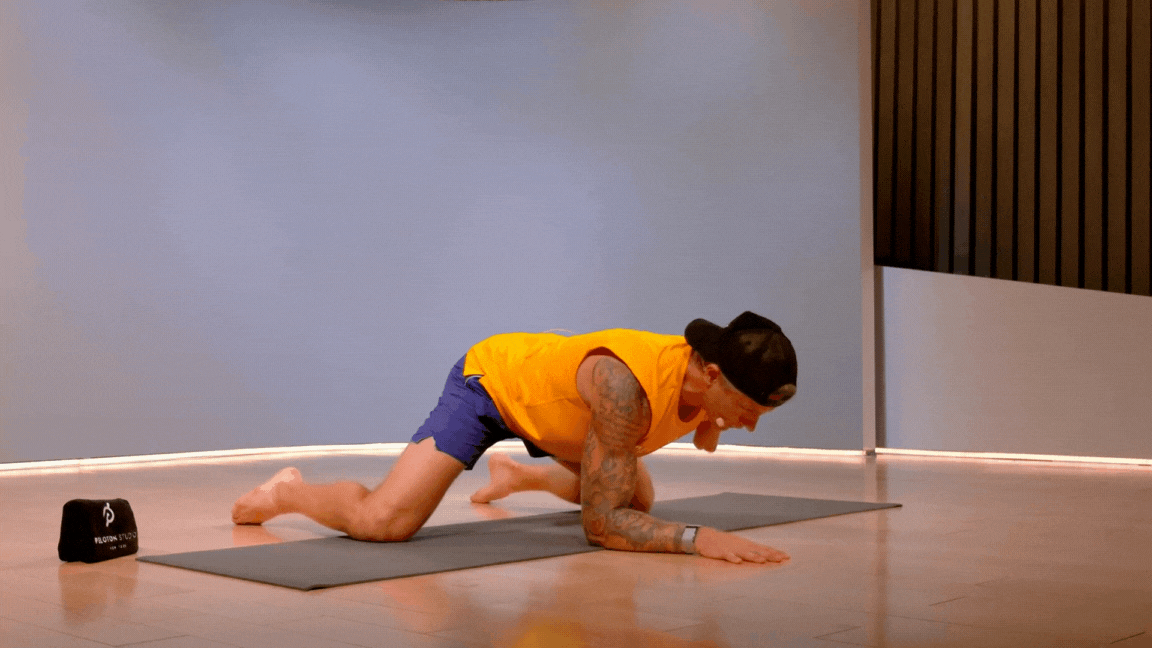
RealPeopleGroup/E+ via Getty Images
What's the Difference Between Static and Dynamic Stretching—And When Should You Do Each?
Knowing when to do the right type of stretch at the right time is key to optimal performance and recovery.
By Abbey Stone•
First Things First: Why Stretch?
What Is Dynamic Stretching?
What Is Static Stretching?
Dynamic vs. Static Stretching: What Are the Differences?
Expert-Approved Dynamic and Static Stretches to Try
When to Choose Between a Dynamic vs. a Static Stretch
Stretching is to fitness what flossing is to dental hygiene: You know it’s key for tip-top health, but no matter how many experts tell you to carve out time for the practice in your routine, it’s usually an after-thought. Another thing stretching and flossing have in common? You’ve got to do them right in order to reap the benefits. And when it comes to dynamic vs static stretching, “doing it right” means choosing the right type of stretch and doing it at the right time.
There are two main types of stretching, static and dynamic: “Dynamic stretching involves active movements that mimic the activity you're about to do, while static stretching involves holding a position to stretch a muscle for around 30 seconds per pose,” says Peloton instructor Matty Maggiacomo. Both have a place in your fitness toolbox—here’s what you need to know about each.
First Things First: Why Stretch?
Increased flexibility is good for a whole lot more than party tricks and racking up likes on the ‘gram with snaps of your impressive contortions.
“In order to have optimal muscle function, you want to have optimal muscle length. Your muscles aren't going to be able to contract or relax or work for you, be as strong as they can be, without having that optimal muscle length,” says Katie Sun Worrall, a California-based physical therapist and dance medicine specialist.
According to Worrall, stretching is also important for improving or maintaining your joints’ range of motion. “Range of motion is the amount of motion that your joint itself can do,” she says. It’s the amount your hips can open up, the ease your arms move in your shoulder sockets (are you able to clasp your hands behind your back and straighten your arms?), or the degree to which you can bend your knees, for instance. “You want to maintain that range of motion of your joints in order to be able to move in all different ways,” says Worrall.
What Is Dynamic Stretching?
The old sit-and-reach from the Presidential Fitness Test we were forced to endure in grade school isn’t the only way to work on flexibility. As the name indicates, dynamic stretching is lengthening your muscles by flowing through a series of movements.
“With dynamic stretching, you're continuously moving through your range of motion. You're not holding anything for longer than 15 seconds,” says Worrall. Think: arm circles, walking lunges, spinal rotations, or a yoga Sun Salutation.
What Is Static Stretching?
On the flip side, static stretching is holding a position that stretches your muscles into their full range of motion (without feeling pain—discomfort is okay and probably to be expected) for a length of time, usually for at least 30 seconds. When you think of “stretching,” static stretching is probably what first comes to mind: folding over to touch your toes, sitting in a straddle position, or holding your arm across your chest.
Active Stretching vs. Passive Stretching
Other terms you might hear when it comes to stretching are active and passive. According to the Cleveland Clinic, active stretching (also referred to as static-active stretching) is when you stretch a muscle by contracting its agonist, or opposing, muscle, rather than using a prop or another body part to put resistance on the muscle. You engage in an active stretch when you lie on your back and lift your straight leg as high as it can go, or when you stretch your calves by flexing your feet.
With passive stretching, which is sometimes called relaxed stretching or static-passive stretching, you use a partner, piece of equipment, or your own body weight to extend your muscles. Picture: using your arms to pull your knee into your chest, or when your yoga instructor puts gentle pressure on your back when you’re seated in a butterfly position. During passive stretching, you can relax into and deepen the stretch with each breath you take. (But, again, you should never force your body to the point of pain.)
Dynamic vs. Static Stretching: What Are the Differences?
A great general rule to follow is that you use dynamic stretches to warm up the body before your cardio or strength workout, and static stretches to help cool down at the end of your sweat sesh, says Matty.
“Dynamic stretching primes your body for exercise,” says Matty. This is because these movements get your heart pumping and blood flowing. According to the American Heart Association, when you increase your circulation, more oxygen is brought to your muscles. Your muscles need this oxygen in order to do the necessary work of contracting with each exercise.
Then, “after you’ve worked out a whole bunch of muscles and you’ve tightened all those muscle spindles up, you need to help them find length again by [static] stretching,” says Worrall. This is important for maintaining your flexibility. (Bonus: By taking time to stretch at the end of your workout, it also gives your body a chance to come down in temperature and for your heart to stop working so hard.)
Hold static stretches before your workout, and you risk impacting the efficacy of your exercise. “Static stretching before a workout essentially makes it harder for your muscle to contract, so then you’re more likely to injure yourself,” says Worrall. She points to research that found that dancers who spent time holding stretches prior to dance class saw diminished performance. “Their muscles weren’t able to contract as fast, and their jumps decreased in height and power,” she says.
Expert-Approved Dynamic and Static Stretches to Try
If you’re looking for stretch classes, the Peloton App, has plenty of classes with dynamic and static stretches to try. Largely, Peloton classes labeled as “mobility,” “warm-up,” or “pre-workout” will be filled with dynamic stretches, while post-workout suggestions are more likely to be static stretches.
Below, Matty breaks down how to do some easy stretches he recommends integrating into your workout routine.
Examples of Dynamic Stretches
Remember, with dynamic stretches you’re not holding each position still for a period of time. Instead, you move deliberately and with control—you don’t want to be flailing around here!—to find your full range of motion.

1. Cat and Cow Poses
Start on your hands and knees with a neutral spine.
Inhale as you arch your back, dropping your belly towards the floor. This is cow pose.
Exhale as you round your back into cat pose, tucking your chin to your chest.
Repeat for several breaths.
“I want you to feel like your spine is floating through a vat of Jell-O,” Matty says in one of his evening stretching classes. “Relax the muscles. We have a tendency to over-engage the core while we do Cat-Cow.”

2. Walking Lunges
Stand tall with feet hip-width apart. Take a step forward with your right foot, bending both knees to 90-degree angles.
Push off your right foot to bring your left foot forward into the next lunge.
Continue alternating legs as you walk forward.
Worrall says lunges are a great dynamic stretch for runners and cyclists, and you can try a number of different variations. “You can do walking lunges where you keep your back leg straight and your heel on the ground. This will give you a calf stretch as well,” she says. “Or, you can try adductor or side lunges.”
3. Arm Circles
Stand with your feet shoulder-width apart. Extend your arms out to the sides at shoulder height.
Make small circles with your arms, gradually increasing the size of the circles.
Reverse direction after a set number of reps.
“We all have different ranges of motion,” reminds Matty in one of his pre-run warmup classes for Peloton. “If you’re feeling stuck [in your joints], keep going.”
Examples of Static Stretches
With static stretches, Worrall recommends holding each position for approximately 30 to 60 seconds. “But older adults aged over 65 typically need to hold stretches for a bit longer than younger adults to see the same tissue changes—so I recommend closer to 60-second holds for this age group,” she adds.
1. Chest Opener
Stand tall with feet hip-width apart. Clasp your hands behind your back and straighten your arms.
Lift your arms slightly and roll your shoulders back, opening up your chest. Hold for a few breaths.

Lie on your back with knees bent and feet flat on the floor. Cross your right ankle over your left knee, flexing the right foot.
Reach your hands around your left thigh and pull it towards your chest.
Hold for a stretch, then switch sides.

3. Frog Pose
Start in a tabletop position. Slowly widen your knees towards the edges of your mat while keeping your ankles in line with your knees.
Lower your hips towards the ground, feeling a stretch in your inner thighs.
Hold for a few breaths.
“I love Frog Pose,” says Matty. “That’s one stretch I try to do daily to release the hips and lower back.”
When to Choose Between a Dynamic vs. a Static Stretch
According to Worrall, you should commit time to dynamic stretches before every workout (New York’s Hospital for Special Surgery recommends 5 to 10 minutes) and static stretches that target the muscles you exercised afterwards. On top of that, if you want to maintain your flexibility, find time once a week for an extended stretch routine; to increase your flexibility, Worrall recommends static stretching three to five times a week.
Plus, Worrall points out, dynamic stretching makes a pretty great workout in and of itself. Those “mobility” classes that are so popular? They’re essentially a series of dynamic stretches. “A lot of yoga—if you think about flowing through a yoga Sun Salutation—is dynamic stretching,” she says.
The final word on dynamic vs static stretching? “Dynamic stretching improves circulation, enhances performance, and reduces the risk of injury, while static stretching increases flexibility and helps with muscle relaxation and off-setting fatigue and muscle soreness,” says Matty.

Peloton App
Access thousands of classes with no equipment needed.
This content is for informational and educational purposes only and does not constitute individualized advice. It is not intended to replace professional medical evaluation, diagnosis, or treatment. Seek the advice of your physician for questions you may have regarding your health or a medical condition. If you are having a medical emergency, call your physician or 911 immediately.
Level up your inbox.
Subscribe for a weekly dose of fitness, plus the latest promos, launches, and events.
By providing your email address, you agree to receive marketing communications from Peloton.
For more about how we use your information, see our Privacy Policy.






